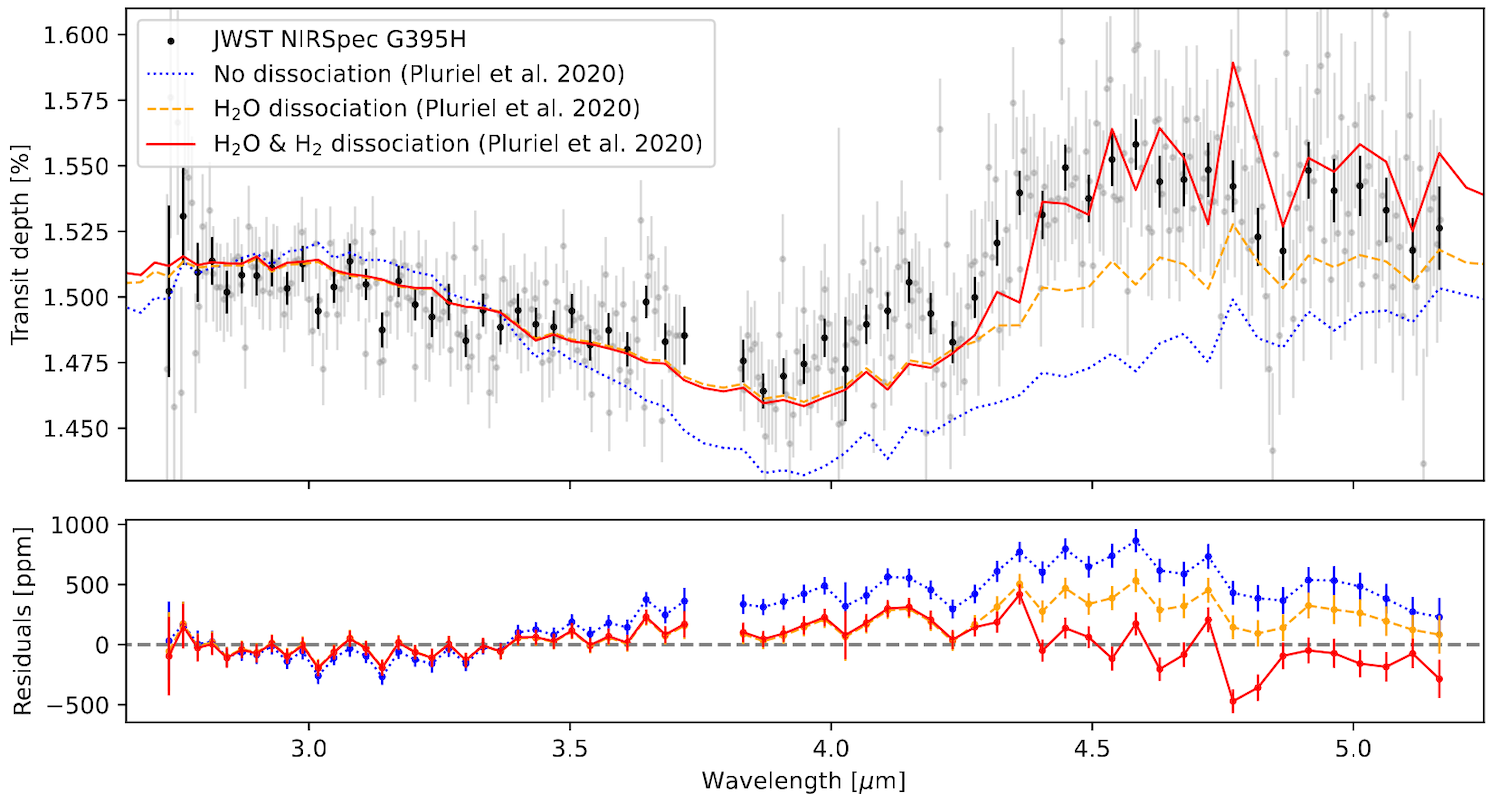WASP-121b's transmission spectrum observed with JWST/NIRSpec G395H reveals thermal dissociation and SiO in the atmosphere
- 1Max-Planck-Institut für Astronomie, Königstuhl 17, D-69117 Heidelberg, Germany
- 2School of Information and Physical Sciences, University of Newcastle, Callaghan, NSW, Australia
- 3School of Physical Sciences, The Open University, Walton Hall, Milton Keynes, MK7 6AA, UK
- 4Space Telescope Science Institute, 3700 San Martin Drive, Baltimore, MD 21218, USA
- 5Department of Physics, Utah Valley University, 800 W University Pkwy, Orem, UT 84058, USA
- 6Department of Earth & Planetary Sciences, Johns Hopkins University, Baltimore, MD, USA
- 7Department of Physics & Astronomy, Johns Hopkins University, Baltimore, MD, USA
- 8Department of Physics and Astronomy, Faculty of Environment, Science and Economy, University of Exeter, Exeter EX4 4QL, UK
WASP-121b has been established as a benchmark Ultra-Hot Jupiter (UHJ), serving as a laboratory for the atmospheric chemistry and dynamics of strongly irradiated extrasolar gas giants. Here, we present and analyze WASP-121b's transmission spectrum observed with NIRSpec G395H onboard the James Webb Space Telescope (JWST) and find evidence for the thermal dissociation of H2O and H2 on the planet's permanent dayside. This finding demonstrates the importance of the thermo-chemical heterogeneity within the planet's atmosphere for the observed transmission spectrum which simultaneously probes the planet's dayside and nightside hemispheres. Additionally, we detect SiO in agreement with chemical equilibrium. Constraining the abundance of SiO and abundance ratios between Si and other atoms in WASP-121b could help discriminate between possible formation scenarios for the planet. The three-dimensional nature of thermal dissociation in WASP-121b, however, poses a challenge to constrain molecular abundances and abundance ratios from the transmission spectrum. Atmospheric models capable of grasping the thermo-chemical heterogeneity in WASP-121b's atmosphere driven by thermal dissociation on the dayside and recombination on the nightside are thus needed to explore the planet's chemical inventory.

Fig. 1: WASP-121b's transmission spectrum observed using JWST/NIRSpec G395H and the model transmission spectra presented by Pluriel et al. (2020). Upper panel: The grey dots show the original data and the black dots show the data binned in wavelength. The model spectra presented by Pluriel et al. (2020) with varying degrees of molecular dissociation are plotted using lines. A wavelength-independent offset was added to the model spectra to fit the mean of the data between 2.9 µm and 3.7 µm. Lower panel: The residuals between the model spectra with added constant and the data are depicted using colored dots with the errorbars of the data propagated onto the residuals. A grey, dashed, horizontal line at 0 was added to guide the eye.
Reference: Pluriel, W., Zingales, T., Leconte, J., & Parmentier, V. 2020, A&A, 636, A66, doi: 10.1051/0004-6361/202037678
How to cite: Gapp, C., Evans-Soma, T. M., Barstow, J. K., Lothringer, J. D., Sing, D. K., Christie, D., Kreidberg, L., and Mayne, N. J.: WASP-121b's transmission spectrum observed with JWST/NIRSpec G395H reveals thermal dissociation and SiO in the atmosphere, Europlanet Science Congress 2024, Berlin, Germany, 8–13 Sep 2024, EPSC2024-191, https://doi.org/10.5194/epsc2024-191, 2024.